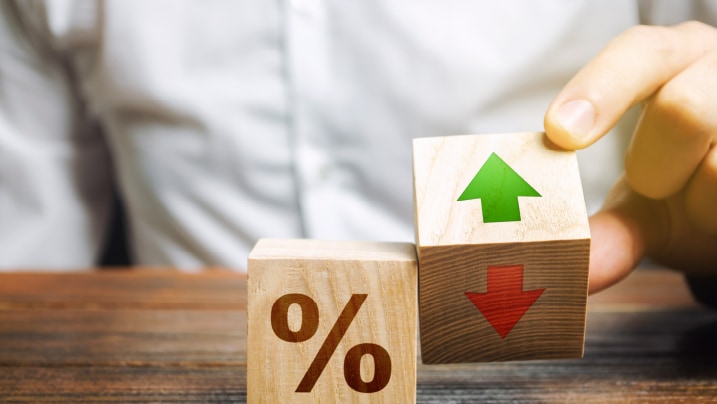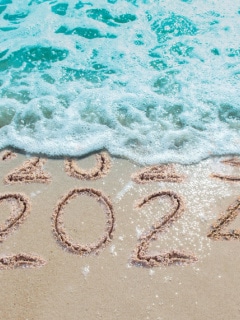CKYC Registry
-
Customer Service Contact us Service request Locate a branch
Find all the help you need
Scan the QR, get our app, and find help on your fingertips

Help CenterSupport topics, Contact us, FAQs and more
-
Login
Are you ready for an upgrade?
Login to the new experience with best features and services
-
Login
Are you ready for an upgrade?
Login to the new experience with best features and services
- Accounts
-
Deposits
IDFC FIRST Bank Deposits
View all Deposits -
Loans
IDFC FIRST Bank Loans
View all Loans - Wealth & Insure
-
Payments
IDFC FIRST Bank Payments
View all Payments -
Cards
IDFC FIRST Bank Cards
View all Cards - Blogs
- Corporate Account
-
Cash Management Services
IDFC FIRST Bank Cash Management Services
View all Cash Management Services - Supply Chain Finance
-
Corporate Lending
IDFC FIRST Bank Lending
View all -
Treasury
IDFC FIRST Bank Treasury
See more details - NBFC Financing
Support topics, Contact us, FAQs and more
- IDFC FIRST Bank Accounts
-
Savings Account
-
Corporate Salary
Account -
Senior Citizens
Savings Account -
First Power
Account -
Current Account
-
NRI Savings
Account -
TASC Institutional
Account -
Savings Account
Interest Calculator
- IDFC FIRST Bank Deposits
-
Fixed Deposit
-
Recurring Deposit
-
NRI Fixed Deposit
-
Safe Deposit Locker
-
FD Calculator
-
RD Calculator
- IDFC FIRST Bank Loans
-
Personal Loan
-
Consumer Durable
Loan -
Home Loan
-
Business Loan
-
Professional Loan
-
Education Loan
-
New Car Loan
-
Pre-owned Car Loan
-
Two Wheeler Loan
-
Pre-owned Two
Wheeler Loan -
Commercial Vehicle
Loan -
Gold Loan
-
Loan Against Property
-
Loan Against Securities
-
Easy Buy EMI card
-
Personal Loan
EMI Calculator -
Education Loan
EMI Calculator -
Home Loan
EMI Calculator
- IDFC FIRST Bank Wealth & Insure
-
FIRST Select
-
FIRST Wealth
-
FIRST Private
-
Mutual Funds
-
Sovereign Gold Bond
-
Demat Account
-
Term Insurance
-
Life Insurance
-
Health Insurance
-
General Insurance
-
Bonds
-
Loan Against
Securities -
Portfolio Management
Service
- IDFC FIRST Bank Payments
-
FASTag
-
Credit Card
Bill Payments -
UPI
-
Funds Transfer
-
Forex Services
-
Pay Loan EMI
- IDFC FIRST Bank Cards
-
Ashva :
Metal Credit Card -
Mayura :
Metal Credit Card -
FIRST Millennia
Credit Card -
FIRST Classic
Credit Card -
FIRST Select
Credit Card -
FIRST Wealth
Credit Card -
FIRST WOW!
Credit Card -
Deals
-
Debit Cards
-
Co-branded Cards
-
Credit Card
EMI Calculator -
FIRST Corporate
Credit Card -
FIRST Purchase
Credit Card -
FIRST Business
Credit Card
- Premium Metal Credit Cards
-
AshvaLifestyle1% Forex₹2,999
-
MayuraLifestyleZero Forex₹5,999
-
FIRST PrivateInvite Only
- Best for travellers
-
MayuraZero ForexMetal₹5,999
-
Ashva1% ForexMetal₹2,999
-
FIRST WOW!Zero ForexTravelLifetime Free
-
FIRST SWYPTravel OffersEMI₹499
-
FIRST Select1.99% ForexLifestyleLifetime Free
-
FIRST Wealth1.5% ForexLifestyleLifetime Free
-
Club VistaraTravelLifestyle₹4,999
-
IndiGo IDFC FIRST Dual Credit CardTravelLifestyle₹4,999
- Max benefits, Free for life
-
FIRST Classic10X RewardsShoppingNever Expiring Rewards
-
FIRST Millennia10X RewardsShoppingNever Expiring Rewards
-
FIRST Select10X RewardsLifestyle1.99% Forex
-
FIRST Wealth10X RewardsLifestyle1.5% Forex
-
FIRST WOW!RewardsTravelZero Forex
-
LIC ClassicRewardsInsuranceShopping
-
LIC SelectRewardsInsuranceShopping
- Reward Multipliers
-
AshvaLifestyleMetal₹2,999
-
MayuraLifestyleZero Forex₹5,999
-
FIRST ClassicNever Expiring RewardsShoppingLifetime Free
-
FIRST MillenniaNever Expiring RewardsShoppingLifetime Free
-
FIRST SelectNever Expiring RewardsLifestyleLifetime Free
-
FIRST WealthNever Expiring RewardsLifestyleLifetime Free
- Rewards & Credit on UPI
-
FIRST Power+FuelUPI₹499
-
FIRST PowerFuelUPI₹199
-
FIRST EA₹NVirtual1% Cashback₹499
-
FIRST DigitalVirtualUPI₹199
-
IndiGo IDFC FIRST Dual Credit CardUPITravelDual cards
- Fuel and Savings
-
FIRST PowerRewardsUPI₹199
-
FIRST Power+RewardsUPI₹499
-
LIC ClassicRewardsInsuranceShopping
-
LIC SelectRewardsInsuranceShopping
- Express and Flaunt
-
AshvaMetal1% Forex₹2,999
-
MayuraMetalZero Forex₹5,999
-
FIRST SWYPEMIOfferMAX₹499
-
FIRST MillenniaRewardsShoppingLifetime Free
- FD Backed rewarding Credit Cards for all
-
FIRST EA₹NVirtualCashback₹499
-
FIRST WOW!Zero ForexTravelLifetime Free
-
CreditPro Balance TransferTransfer & SaveReduce InterestPay Smartly
- IDFC FIRST Bank NRI Forex Solutions
-
Send money to India-Wire transfer
-
Send money to India-Digitally
-
Send money abroad
-
Max Returns FD (INR)
- IDFC FIRST Bank MSME Accounts
-
Platinum Current
Account -
Gold
Current Account -
Silver Plus
Current Account -
Merchant Multiplier
Account -
Agri Multiplier
Account -
TASC Institutional
Account -
Dynamic Current
Account -
World business
Account -
First Startup
Current Account
- IDFC FIRST Bank Business Loans
-
Business Loan
-
Professional Loan
-
Loan Against Property
-
Business Loan for Women
-
Working Capital Loan
-
Construction Equipment Loan
-
Machinery Loan
-
Healthcare Equipment Loan
- IDFC FIRST Bank Business Solutions
-
Payment Solutions
-
Tax Payments
-
Doorstep Banking
-
Point of Sale (POS)
-
Escrow Accounts
-
NACH
-
Payment Gateway
-
UPI
-
Virtual Accounts
-
As per amendment in the Income Tax Rules, PAN or Aadhaar are to be mandatorily quoted for cash deposit or withdrawal aggregating to Rupees twenty lakhs or more in a FY. Please update your PAN or Aadhaar. Kindly reach out to the Bank’s contact center on 1800 10 888 or visit the nearest IDFC FIRST Bank branch for further queries.
-
-
Most Searched
Sorry!
We couldn’t find ‘’ in our website
Here is what you can do :
- Try checking the spelling and search
- Search from below suggestions instead
- Widen your search & try a more generic keyword
Suggested
Get a Credit Card
Enjoy Zero Charges on All Commonly Used Savings Account Services
Open Account Now

India's central bank, i.e. Reserve Bank of India (RBI), keeps a close check on the economic conditions prevailing in the country and then decides the repo rate. But what is the repo rate? It is the rate at which RBI extends credit to commercial banks against their treasury bills. The six-member monetary policy committee decides the repo rate, which meets twice a month to deliberate on whether to increase, decrease or maintain the repo rate.
Repo rate directly affects the rate of interest at which you borrow loans from your bank. Let's learn in detail about the repo rate and how it affects the cost of borrowing for ordinary citizens.
What is the meaning of Repo Rate?
Just as a borrower has to pay interest against the loan from their bank, banks also need to pay interest against their borrowings. All commercial banks can borrow loans from the RBI by selling eligible securities such as treasury bills. Banks usually take loans whenever they face a cash crunch and require liquidity for conducting their day-to-day banking activities.
The rate at which banks have to pay interest to RBI is known as the Repo Rate. Repo is the short form of Repurchase Option or Repurchase Agreement.
Banks agree to repurchase these securities in the future at a predetermined price.
READ MORE
Current and past Repo Rates
The repo rate has fluctuated over the years, depending on the economic conditions in India. The RBI typically increases the repo rate when it wants to control inflation, and decreases it when it wants to stimulate economic growth.
When was the RBI repo rate changed?
The Reserve Bank of India's (RBI) Monetary Policy Committee (MPC) last revised the key repo rate on February 8, 2023, increasing it by 25 basis points from 6.25% to 6.50%. This marked the fourth consecutive repo rate hike by the MPC since the tightening cycle commenced in May 2022.
The repo rate is the interest rate at which the RBI lends to commercial banks and it influences the overall interest rates in the economy. The RBI has been raising rates steadily to contain inflation which has remained above the 6% upper limit of the target range for several months.
The MPC meets every six weeks to review domestic and global economic conditions and determine if any rate action is warranted. However, the RBI can also revise rates in between scheduled meetings in response to unexpected developments.
What is the difference between the repo rate and the MCLR rate?
The key difference is that the repo rate is set by the RBI while the MCLR (Marginal Cost of Funds based Lending Rate) is determined by commercial banks. The repo rate is the interest at which RBI lends to banks and acts as a benchmark for overall interest rates. In contrast, the MCLR is the minimum rate at which banks can lend and is based on four components – marginal cost of funds, operating expenses, tenor premium, and margin. Banks reset their MCLR periodically based on the repo rate and cost of funds. Thus, the repo rate influences the MCLR but they are not the same.
What is the relationship between inflation and repo rate?
The repo rate, which is determined by a country's central bank, has a very close relationship with inflation in the economy.
When inflation is high or rising, central banks will typically raise the repo rate. Raising the repo rate increases the cost of borrowing for both consumers and businesses. This reduced spending power translates into lower demand in the economy, which helps cool inflation. Simply put, higher repo rates slow down economic activity and control prices.
Conversely, when inflation is under control and within targeted limits, central banks can reduce the repo rate. Lower repo rates make it cheaper to borrow money, which leads to higher spending by consumers and businesses. This boosts overall economic growth and activity.
Therefore, inflationary trends directly influence the central bank's stance on the repo rate. Managing inflation is a key mandate for central banks and adjusting the repo rate is a monetary policy lever they actively use to maintain price stability in the economy. The repo rate and inflation essentially share an inverse relationship.
Repo rate vs reverse repo rate
The repo rate is the rate at which RBI lends money to commercial banks for the short-term. It involves banks selling securities to the RBI and agreeing to repurchase them later at a higher price. This way RBI infuses liquidity into the banking system.
The reverse repo rate, on the other hand, is the rate at which banks park their surplus funds with the RBI for short periods. Here, banks buy securities from RBI and sell them back later. Through the reverse repo, RBI absorbs excess liquidity from the system. The reverse repo rate is always kept lower than the repo rate to encourage banks to borrow from RBI rather than parking funds. It essentially regulates liquidity conditions.
Significance of the Repo Rate
The repo rate is one of the most important tools in the RBI's Monetary and Credit Policy. It acts as a liquidity management mechanism whereby RBI tightens or eases the repo rate to keep the economy afloat.
Whenever the economy is going through inflation, RBI raises the repo rate to discourage businesses and the general public from taking loans. This slows down the investment-related activities in the country and helps combat inflationary movements that may have led to a sudden soar in prices of everyday goods and services.
On the other hand, during times of recession, RBI reduces the repo rate, which further leads banks to decrease the interest rate on loans to the general public. This, in turn, gives a boost to the overall economy and gives a push to spending activities as people want to borrow loans at lower rates of interest.
Central banks worldwide devise various strategies to keep a tight check on their economies. RBI repo rate is used extensively as a critical monetary tool to control inflation and tame recession, thus managing the overall flow of money circulating in the market.
How does Repo Rate affect Interest Rates on Loans?
The RBI repo rate and the rate of interest at which banks advance loans are directly proportional. Thus with a repo rate hike, the general interest rate charged on loans by your bank will also increase and vice versa.
What effect does repo rate has on the life of a common man?
The repo rate directly affects interest rates on loans taken by common citizens from banks and financial institutions. When the RBI increases the repo rate, banks have to pay higher interest on borrowing from the RBI. This increased cost gets passed on by banks to end consumers in the form of higher interest rates on home loans, auto loans, personal loans, and credit card dues. This increases the EMIs of retail borrowers.
Conversely, cuts in the repo rate translate into cheaper loans. Lower interest rates spur consumer spending and business investments. Thus, through its impact on prevailing interest rates in the economy, the repo rate affects the borrowing and spending power of the common citizen. It influences major financial decisions of individuals from buying homes and cars to financing higher education and personal needs. The overall cost of living and quality of life get impacted by RBI's repo rate.
How does this play practically in real life
Scenario 1: RBI increases Repo Rate
A hike in repo rate translates into more outgo for the banks as they will pay higher interest on the loans taken by them from RBI. This will also affect the rate of interest of their retail loans, which will go up, and the burden will fall on the end customer, i.e. borrower. The borrower will end up paying more interest, and their loan EMIs will become expensive.
Scenario 2: RBI lowers Repo Rate
As soon as the banks understand that RBI has reduced repo rates, they will be expected to follow suit and pass on the benefit to their customers. Since they will be in a better position to pay off their dues to RBI comfortably, they will also lower the interest rate charged to the borrower. Along with that, they are likely to increase the interest rate on deposits, resulting in increased income for their fixed deposit holders.
However, it is important to note that interest rate cuts and deposit rates hike are decisions that banks will take after considering the liquidity position or cash inflows and the demand for deposits from their customers.
What can a borrower do?
The potential borrower should act swiftly and immediately take a loan to gain lower interest rates. In the case of an existing borrower, the repo rate hike will ultimately lead to an increase in their monthly loan EMIs. In such a case, if the borrower can afford to pay off the loan, they should immediately do so.
By prepaying your loan, you will save yourself from a lot of interest payments since you would be paying up your principal amount on which interest accrues.
The borrowers must also ensure that their loan is linked to an external benchmark. This means that as soon as the rate of the external benchmark declines, the immediate benefit would pass on to the borrowers, depicting a decrease in the retail loan rates. The borrower should ask the lender to switch their loan to a loan linked to the external benchmark rate. If their lender does not offer this facility, they should consider switching to a new lender who does so.
To sum it up
Borrowers should stay updated with the latest repo rates declared by RBI, as has a direct bearing on their loan interest rates.
IDFC FIRST Bank has always encouraged complete transparency amongst all its stakeholders and continues to do so. Along with the variety of loan products for all your needs, i.e. personal or professional, IDFC FIRST Bank offers competitive interest rates on its wide range of loans. Reach out today to IDFC FIRST Bank to avail of a loan to meet your various requirements.
Frequently Asked Questions
How does an increase in repo rate impact existing borrowers?
When RBI increases the repo rate, banks have to pay higher interest on their borrowings. This cost is passed on to customers in the form of higher interest rates on loans and credit products. As a result, EMIs on home loans, personal loans, vehicle loans, etc., go up for existing borrowers. Those with loans on floating rates are impacted faster compared to fixed rate loans.
How does a reduced repo rate help borrowers?
A cut in RBI's repo rate leads to lower interest rates on retail loans as cost of capital reduces for banks. Existing borrowers benefit as interest rate on floating loans come down immediately. Even fixed rate loans get cheaper as banks lower rates for new customers. Lower EMIs improve disposable income and boost spending.
Who benefits more from falling repo rates – existing or new borrowers?
New borrowers get to avail loans at lower interest rates as banks quickly transfer repo rate cuts through cheaper home and auto loans. However, existing borrowers have to wait until loan reset period to pay lower EMIs. RBI has directed banks to link retail loans to external benchmarks so that transmission of lower rates is faster.
What should existing borrowers do when repo rate rises multiple times?
One option is switching from fixed rate to floating rate loan so that they can avail lower EMIs when rates fall in future. Existing borrowers can also prepay or increase their loan tenure to manage higher EMIs. Opting for lower EMI top-up loans on the same terms as the original loan is another way to handle interest rate hikes.
How does high repo rate impact credit card borrowers?
Since credit card interest rates are not regulated, banks tend to increase them faster when repo rates rise. Minimum amount due and cash withdrawal charges also go up. Existing cardholders face higher interest costs on revolving credit if full dues are not paid. It is advisable to avoid fresh purchases and pay up the entire bill amount to avoid ballooning interest outgo.
Disclaimer
The contents of this article/infographic/picture/video are meant solely for information purposes. The contents are generic in nature and for informational purposes only. It is not a substitute for specific advice in your own circumstances. The information is subject to updation, completion, revision, verification and amendment and the same may change materially. The information is not intended for distribution or use by any person in any jurisdiction where such distribution or use would be contrary to law or regulation or would subject IDFC FIRST Bank or its affiliates to any licensing or registration requirements. IDFC FIRST Bank shall not be responsible for any direct/indirect loss or liability incurred by the reader for taking any financial decisions based on the contents and information mentioned. Please consult your financial advisor before making any financial decision.
The features, benefits and offers mentioned in the article are applicable as on the day of publication of this blog and is subject to change without notice. The contents herein are also subject to other product specific terms and conditions and any third party terms and conditions, as applicable. Please refer our website www.idfcfirstbank.com for latest updates.






















